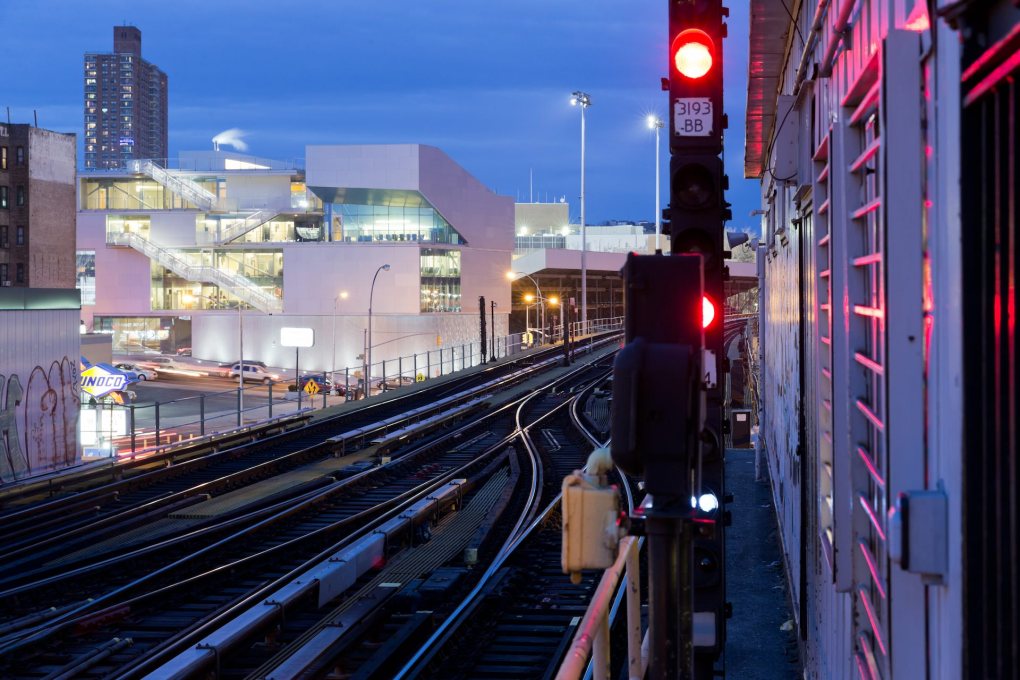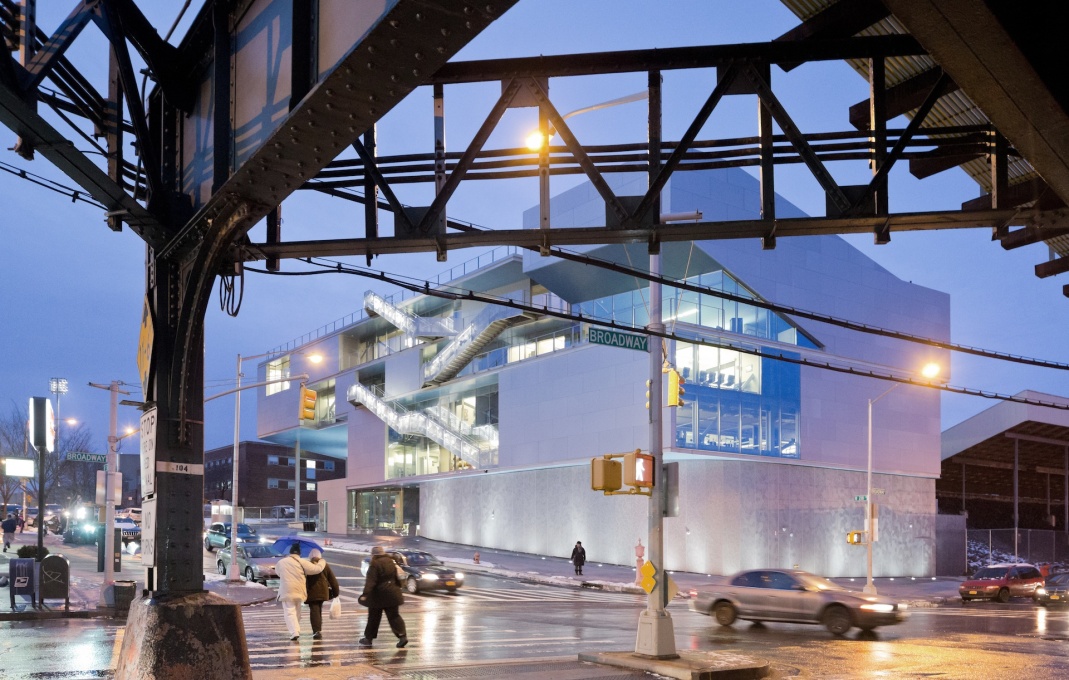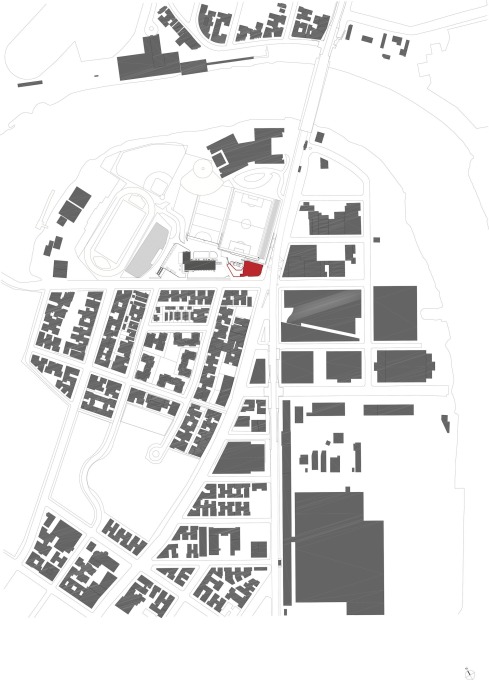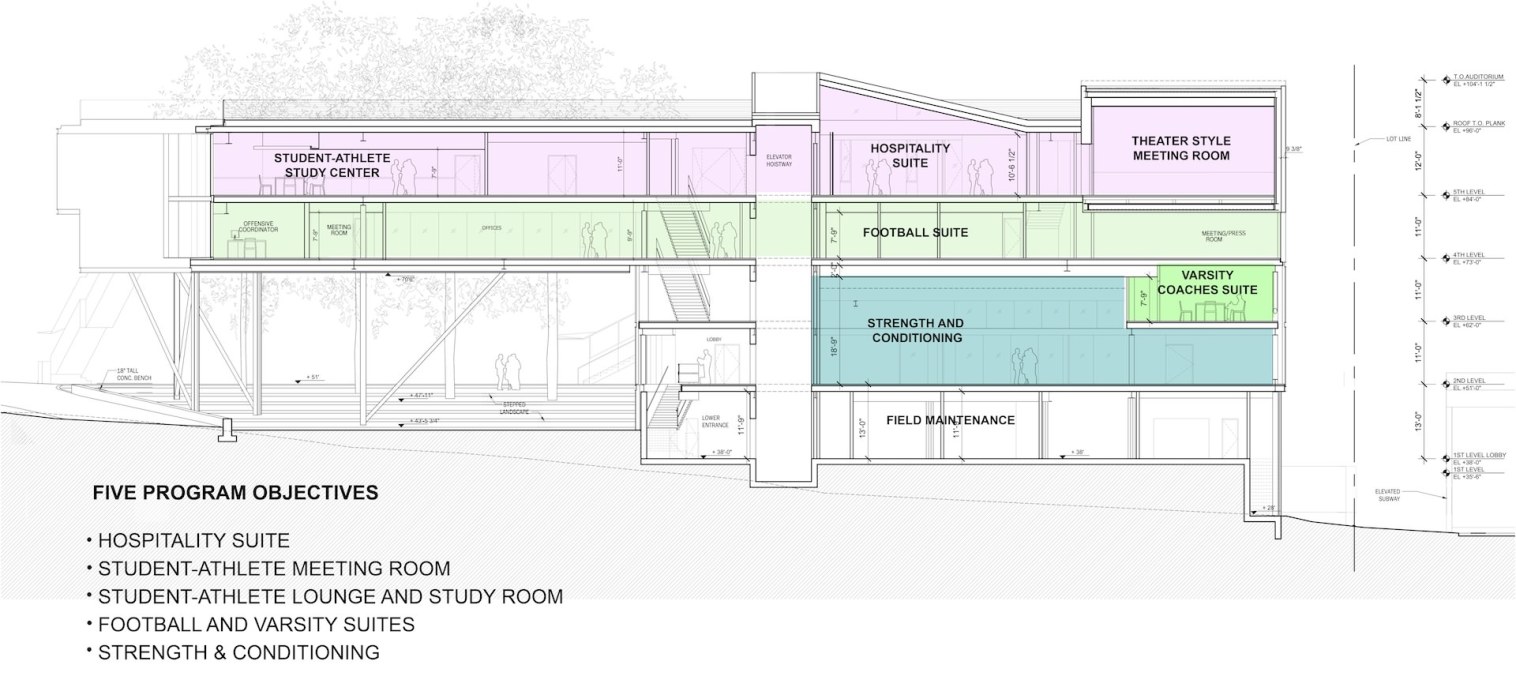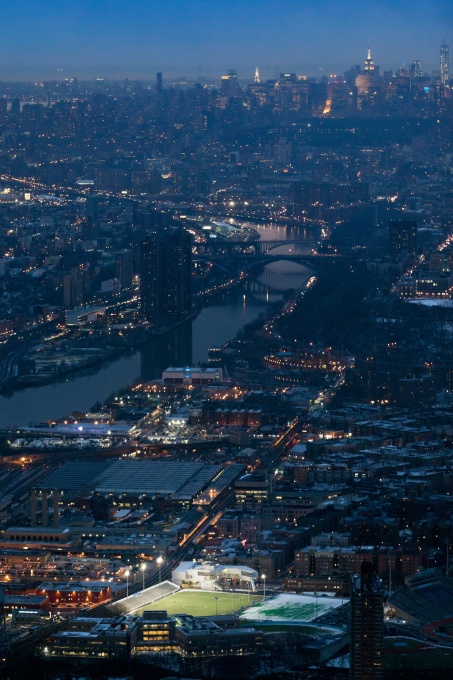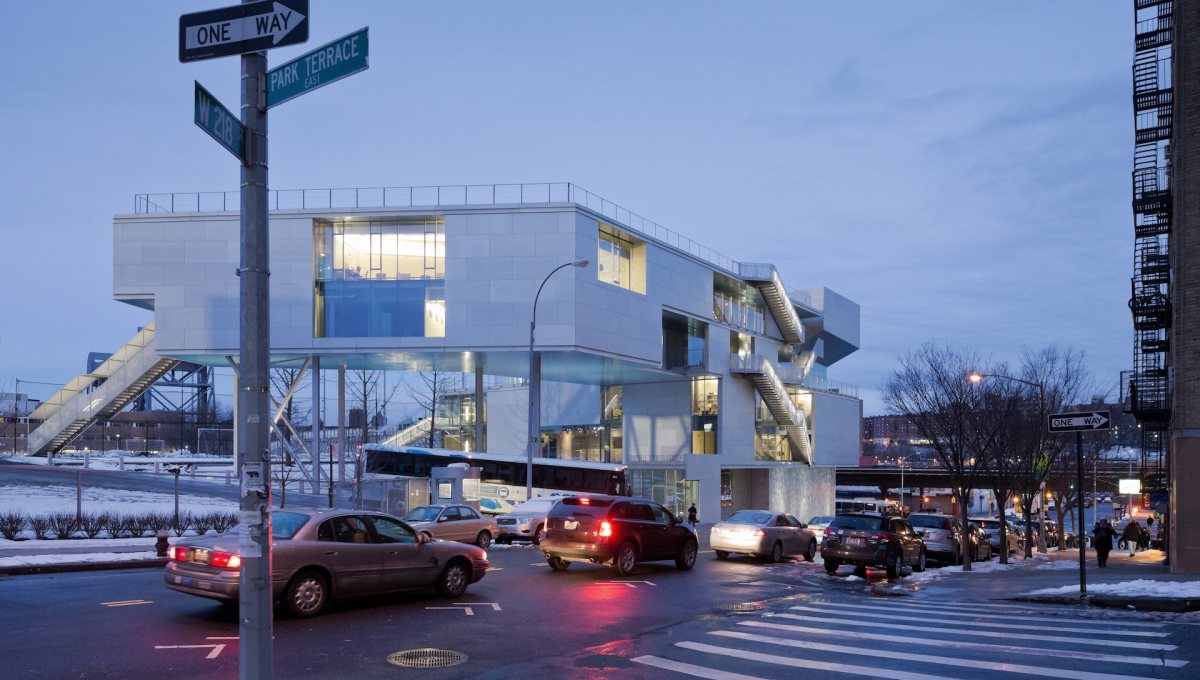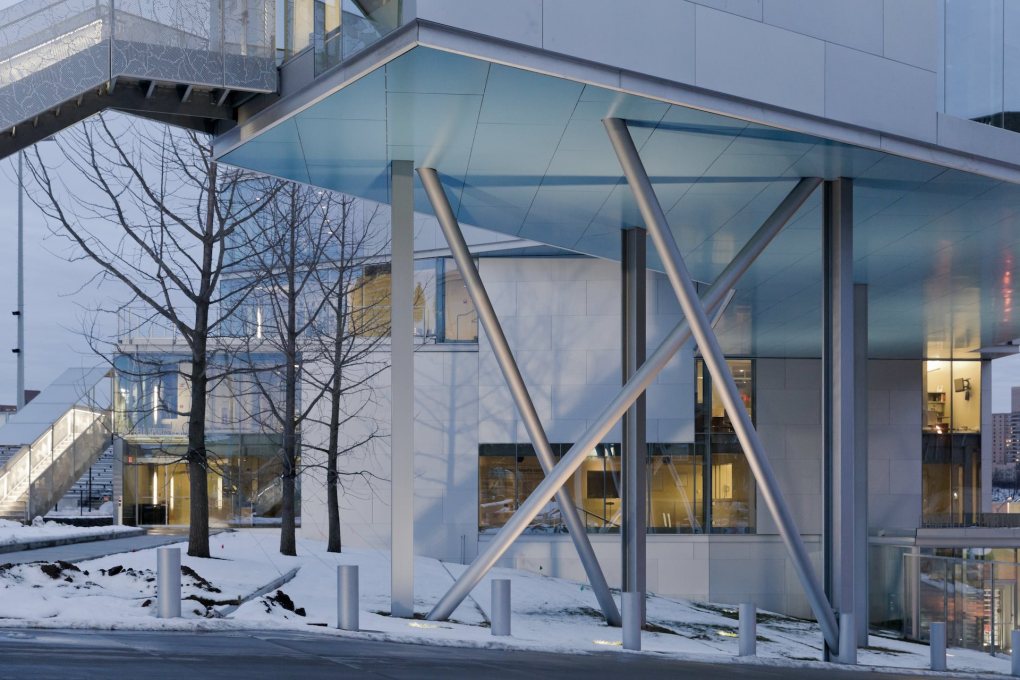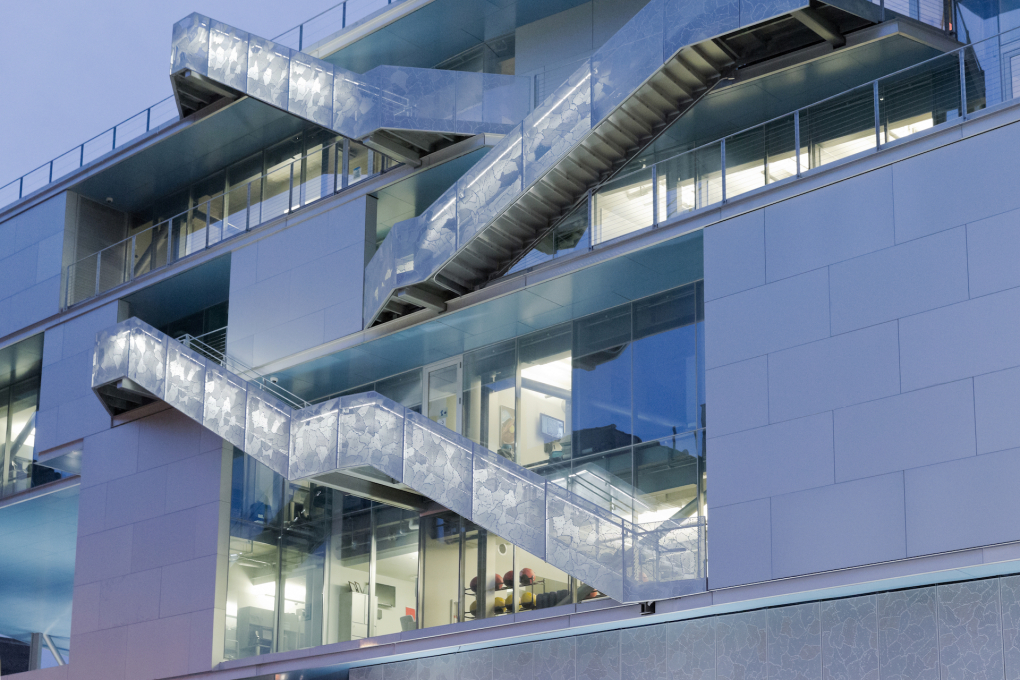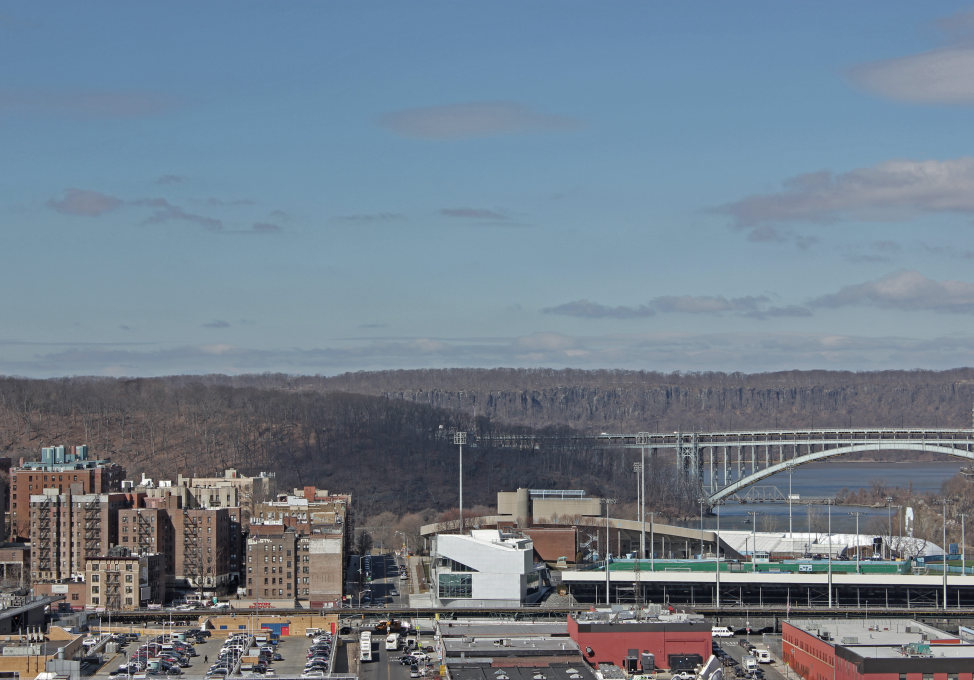Campbell Sports Center is Steven Holl's conscientious new addition to the Inwood neighborhood on Manhattan's northern tip. Rich with sports metaphors, the design of the center engages its urban surroundings through some of Holl's signature optical effects. Mimi Zeiger plays receiver and reports from the field.
At Broadway & W. 218th Street there are only a few blocks left of Manhattan Island. 219th. 220th – the vestigial tail of 9th Avenue. Marble Hill and The Bronx are just across the Harlem River but this neighborhood, Inwood, is the narrow end of the landmass, the point where the accumulated capital (real and cultural) of the Big Apple goes to seed. It’s here, on this inauspicious corner in the nosebleed north of the borough, where we find Steven Holl Architects’ first ground-up building in New York City.
Holl’s Campbell Sports Center anchors the Columbia University Baker Athletics Complex, a patchwork of decades-old fitness structures, sports fields, a stadium and a tennis bubble that stretch from Broadway to the East River. This land was once rural, then quarried for marble to build City Hall more that two hundred blocks south, and finally zoned for auto body repair. Financier George F. Baker gifted the 26-acre tract to the university in 1921 and in the spring of 1922 the Columbia Lions held their football practice on site. Holl and architect Chris McVoy instilled a huge amount of responsibility on the modest 48,000 square foot (4,459 square meter) building on the southwest corner of Columbia’s landholdings. Their design negotiates not only the site’s hilly topography, but also a relationship between town and gown – an Ivy League physical fitness outpost and a largely Dominican neighborhood.
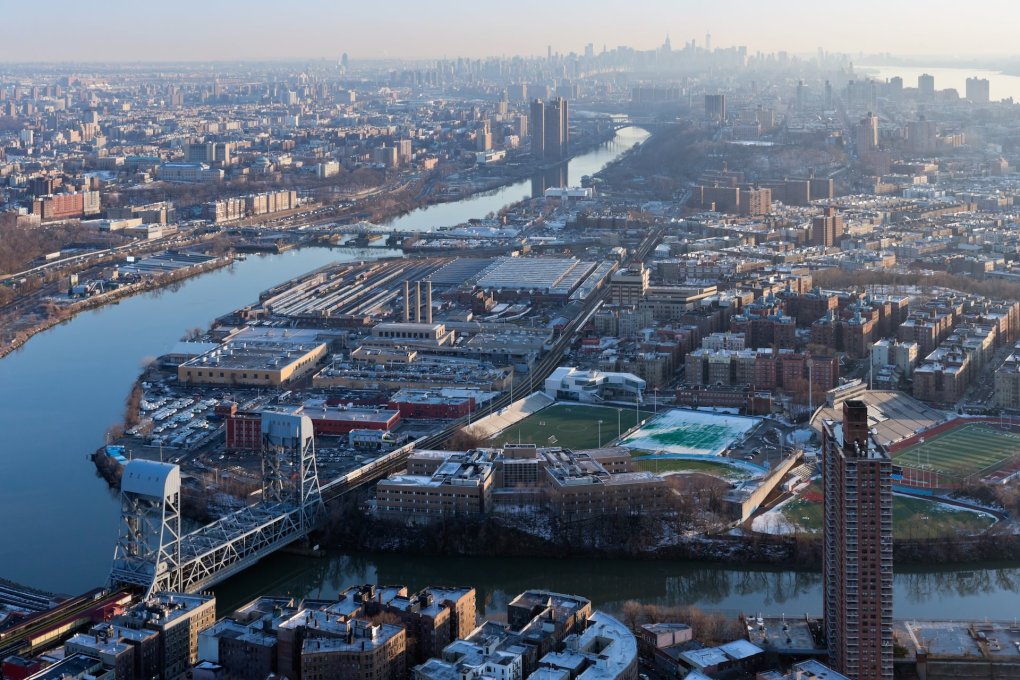
Holl’s office likens the building to a piece of infrastructure, akin to the adjacent elevated line-1 subway tracks or the Broadway Bridge looming on the horizon. Constructed from precast concrete and aluminum panels hung on a steel frame, it’s possible to understand the Campbell Sports Center as a bridge of sorts. But in truth the architecture pays homage to urban infrastructure with a pastiche of optical effects.
The culmination of these effects is seductive. Visitors who arrive at the building via the subway are apt to quickly fall under an infrastructural spell. From the elevated train platform a vintage industrial landscape stretches forth: brick tenements zippered with blackened fire escapes, the Broadway Bridge’s steel trestles, and monumental smokestacks. You might imagine that a piece of contemporary architecture would stand out like a sore thumb in this tableau. Yet on a day where the sky is filled with clouds, the Campbell Sports Center’s façade proves a false mirror – Magritte-like puffs of white on a blue canvas. The tactic of dissolving the façade (even a four-story one) is straight out of the Holl playbook, a maneuver best illustrated by his iconic 1992 collaboration with artist Vito Acconci at Storefront for Art and Architecture. In a similarly defiant act of parallaxic display, the sports center refuses to resolve into a single form.
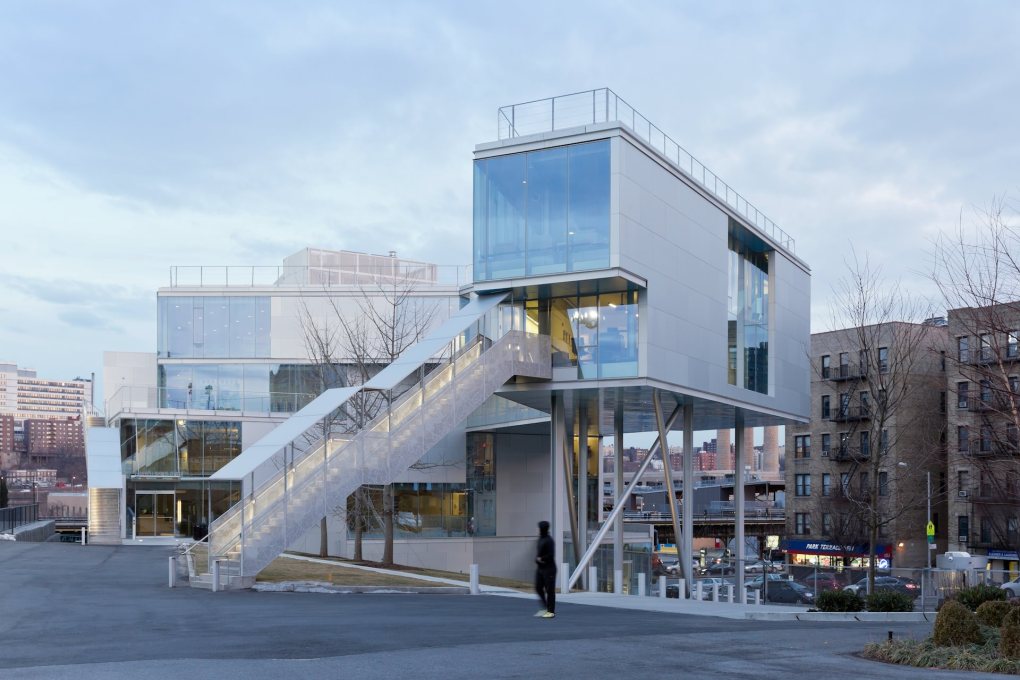
True to Columbia University’s mandate to design a building for the “student-athlete,” Holl divided up the parti into spaces for the “mind” and spaces for the “body.” This oscillation accounts for differentiations on the exterior. But what of the “mind-body”? Holl’s answer is to combine these in the bamboo-clad auditorium, a volume given expression on the east and south facades, which seamlessly tucks into floor plan. Here the screening and lecture room is meant for, among other things, reviewing game video and is outfitted with tiers of oversized seating: ready to accommodate player’s bodies while engaging their minds.
According to his PR staff, Holl played high-school football. And while the center is meant to train intercollegiate athletes from any number of sports, the broad-shouldered Columbia Lions set the tone. Holl’s design concept is based on field play diagrams – the X’s and O’s football coaches draw on white boards. He calls this approach “points on the ground, lines in space.” The phrase translates to point foundations on the sloping site and the structural supports that hold up the bridge-like volume housing the football/varsity suites and student-athlete lounge
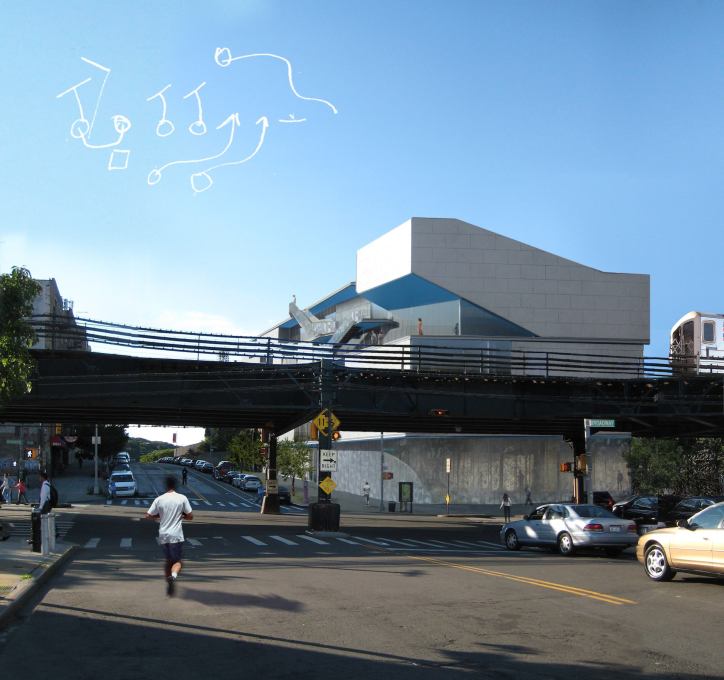
But if points and lines imply stasis and motion, or defense and offense, the interior is more linebacker than running back. Finishes are spare and the robust structural system reveals its beefiness around the building’s perimeter, just inside the curtain wall. A large workout room ringed with offices for trainers and coaches fills the main floor with rows of weight benches and treadmills ready to get Columbia students into shape. The room lacks a fleetness, despite its double-height and panoramic views over the neighborhood. Ultimately, the interior settles for purposeful. Purposeful decorated with light blue – Columbia blue – paint.
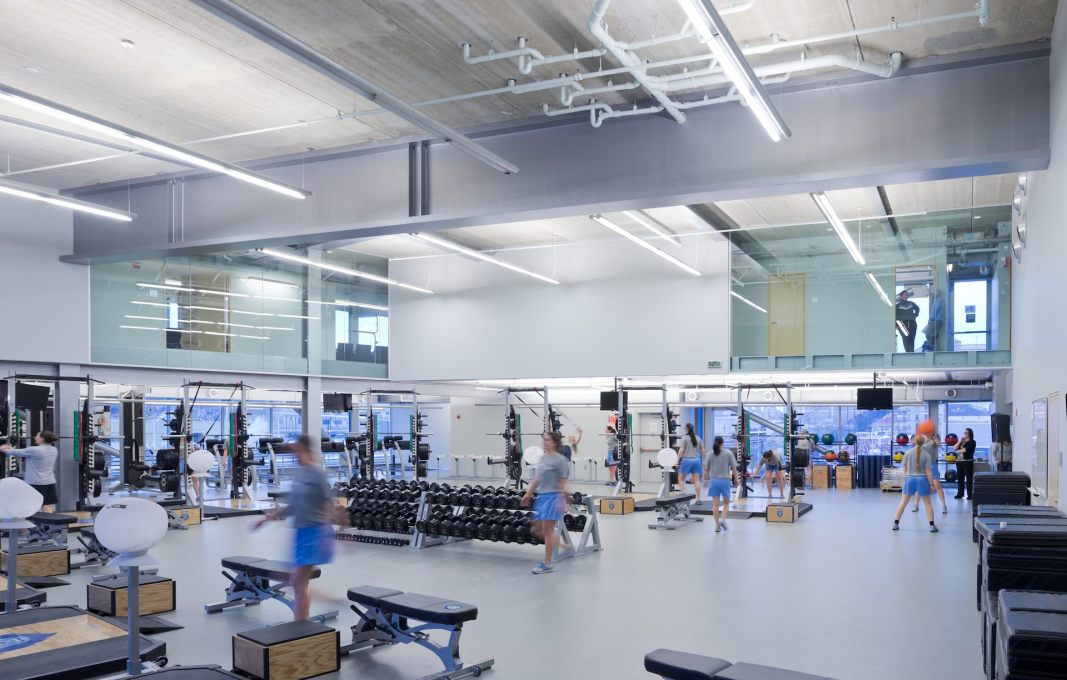
Perhaps this stalwart stance is appropriate given the kinds of investment required for sports programs in general and the potential for game-day returns. The exterior then acts like a cheerleader, rallying the neighborhood with dazzling urban cheers, while the interior is focused on the field.
Mimi Zeiger is a Los Angeles-based journalist and critic, covering architecture, art, urbanism, and design. She’s editor of loud paper and a founding member of #lgnlgn.




